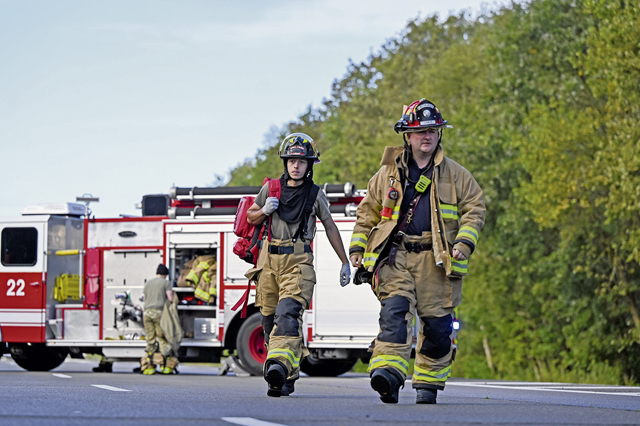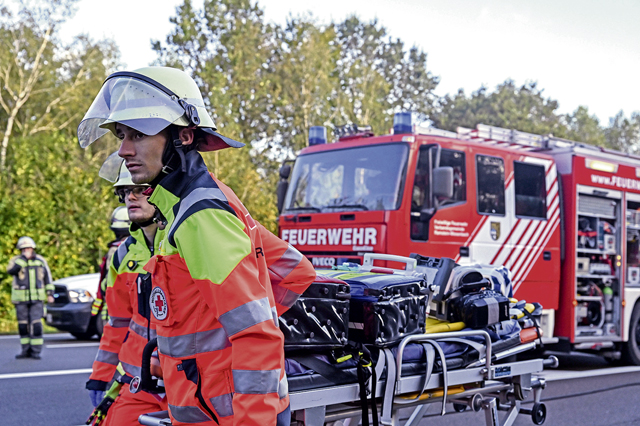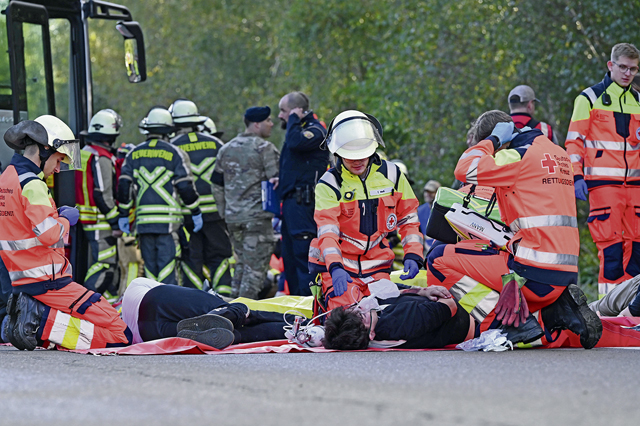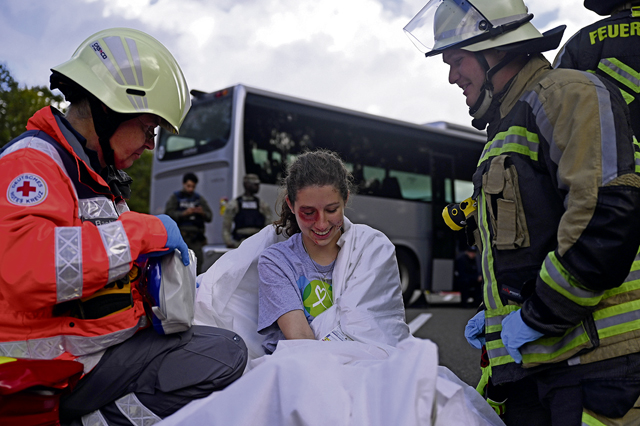
The 86th Airlift Wing Host Nation office and the Kaiserslautern County Administration cooperated in conducting a joint German-American disaster response exercise with participating units from Ramstein Air Base to foster interoperability between U.S. and host nation first responders at Ramstein Air Base, Sep. 28.
The exercise allowed both countries to combine efforts to become more effective at communicating on how to provide life saving support if a real life disaster situation were to occur.
An exercise like this hasn’t happened since 2016. A school bus crash was simulated with victims dressed in moulage portraying injuries varying from small cuts to life-threatening wounds. The exercise gave first responders the opportunity to build multilateral medical and communication skills.

“It’s important to try it again,” said Ralf Lessmeister, County Commissioner of the Kaiserslautern County, Germany. “Understanding the transfer of support is crucial to providing an effective medical response.”
Lessmeister explained that during a disaster, even if the injured individuals consist of Americans associated with the Department of Defense, the county takes responsibility once the number exceeds 20 people.
Medical exercises, especially ones that involve two different countries, require a significant amount of support and communication. With numerous emergency response vehicles and personnel, understanding the logistics to urgently provide care to people in need and being prepared is essential to ensure mission readiness and to save lives.

“There is a lot of teamwork,” said U.S. Air Force Airman 1st Class Christian Seidling, 86th Civil Engineer Squadron firefighter. “It was really cool being able to work with the German medics. I learned a lot from them.”
This joint exercise highlighted the imperative importance of collaboration between U.S. and German first responders in ensuring readiness for future emergencies, and effectively responding to disaster relief.



